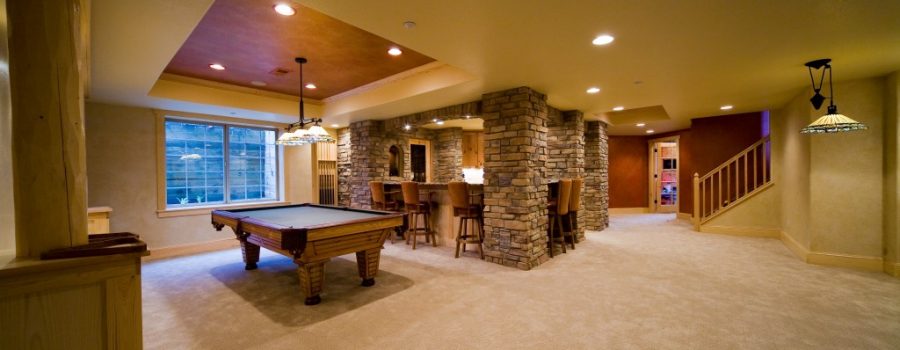The basement remodel is a hugely popular project undertaken by thousands of homeowners every year. A well-finished basement can be turned into almost anything a homeowner can dream up, from an extra guestroom suite to a full-scale gaming and entertainment room.
With all the flooring options available, choosing a floor is already a difficult process. Choosing basement flooring is often even more difficult as it more often than not represents a moisture problem that may render some flooring options unavailable.
Removing as much of moisture from a basement as possible is, of course, a major part of any basement remodeling project. The easiest way to check on the moisture level of your current basement floor is to take a non-porous material—a simple black trash bag works well—and seal the material with tape to a couple different places around your basement floor. Wait for 24 hours and then check underneath the material. If you can feel any condensation build up, you should get your moisture problem taken care of first.
Once you have determined that your basement is relatively dry you can begin looking at the different types of flooring that work well in a basement. Here is the lowdown on the most popular:
Engineered Hardwood Flooring
This is a flooring material that is designed specifically to withstand a great deal more moisture than traditional natural hardwood flooring. It is also generally thinner than hardwood allowing for the installation of extra insulation, something that many basements will benefit from in the long run.
Laminate Flooring
In a relatively dry basement setting laminate is a great way to bring the look of hardwood into the room for less. However, some laminates just do not do well in settings where there is even a little extra moisture in the air so you should definitely consult with a flooring specialist about the right laminates to install before you buy as damaged laminate flooring is nearly impossible to repair.
Ceramic Tile
A great option for the basement as long as the subfloor is dry enough to hold the adhesive. Therefore a little extra attention has to be paid to subfloor preparation before the tile is laid than you might in other rooms.
Flooring Options That May Not Work Well
Justifying the expense (and risk) involved in installing solid hardwood flooring in a below-grade installation is hard to do. Engineered hardwood really is the better way to go below ground and the results are every bit as beautiful.
Carpet in the basement can be risky as well. Even the driest of basements often have more humidity than the rest of the house and completely carpeting an entire basement can be an invitation to mold and mildew (and ruined carpeting.) If you really want the comfort of carpeting to be a feature in your remodeled basement though it’s easy to achieve with a few well-placed area rugs.


Leave a Reply
Your email is safe with us.